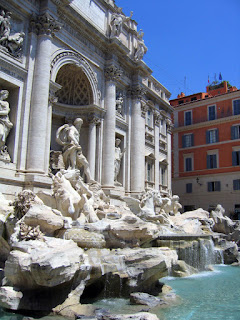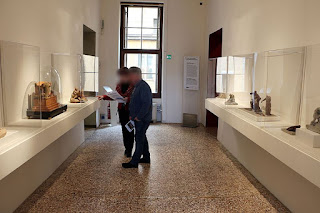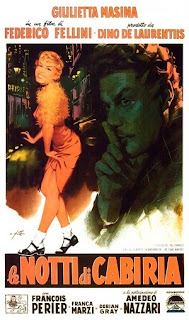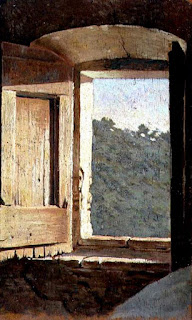Man of the people who fought Fascism
 |
| Sandro Pertini (right) congratulates coach Enzo Bearzot after Italy won the World Cup in Spain in 1982 |
Pertini, a staunch opponent of Fascism who was twice imprisoned by Mussolini and again by the Nazis, passed away at the apartment near the Trevi Fountain in Rome that he shared with his wife, Carla.
After his death was announced, a large crowd gathered in the street near his apartment, with some of his supporters in tears. Francesco Cossiga, who had succeeded him as President, visited the apartment to offer condolences to Pertini's widow, 30 years his junior. They had met towards the end of the Second World War, when they were both fighting with the Italian resistance movement.
Pertini's popularity stemmed both from his strong sense of morality and his unwavering good humour. He had the charm and wit to win over most people he met and was blessed with the common touch.
 |
| Sandro Pertini with his customary pipe |
Pertini's life story was extraordinary. Born in Stella, in Liguria, in the province of Savona, he was the son of a wealthy landowner and was given an expensive education, culminating in a Law degree from the University of Genoa.
He was patriotic inasmuch as he enlisted to fight in the Italian army in the First World War even though he opposed Italy's involvement, but his politics leaned towards the left. After the war he joined the Unitary Socialist Party (PSU) and settled in Florence.
Already openly opposed to the Fascists, whose squads of paramilitary thugs beat him up more than once, his attitude hardened considerably when Giacomo Matteotti, the PSU leader, was murdered soon after accusing Mussolini's party of using violence and fraud to influence the 1924 elections.
He was arrested for the first time in 1925 for 'inciting hatred' after attacking the Fascists in print for their "barbarous domination" and sentenced to eight months' jail. He managed to escape and fled to France.
 |
| Sandro Pertini made a point whenever possible of meeting children in person when they visited the presidential palace |
Exiled to Santo Stefano, an island in the Tyrrhenian Sea, he was released with the arrest of Mussolini in 1943. Recaptured by the occupying Nazi forces and sentenced to death, he was freed by partisans and joined the anti-Nazi resistance movement.
By then the PSU had rejoined the Italian Socialist Party (PSI) from which it had broken away previously, and after being part of the Constituent Assembly charged with designing the constitution for the new Italian Republic, Pertini was elected to the Chamber of Deputies under the PSI flag.
In 1968 he became president of the Chamber of Deputies and in 1978 President of the Republic, elected as a compromise candidate respected by politicians of the left and right.
Although by then he was 72, the pipe-smoking Pertini did much to restore the credibility of the political system in Italy at a time when the country was demoralised by internal terrorism, corruption scandals and a weak economy. He denounced the violence of the Red Brigades, spoke out against organized crime and expressed his disgust with South African apartheid, the Chilean dictator Augusto Pinochet and other dictatorial regimes. He also criticised the Soviet invasion of Afghanistan.
 |
| Pertini was pictured playing cards with Dino Zoff, Franco Causio, and Enzo Bearzot on the plane home from Spain |
Always his own man, Pertini declined the opportunity to live in the Quirinale Palace, preferring his own apartment, and rather than be ferried around in state-owned limousines he had his wife drive him around Rome in a red Fiat 500. Despite being an atheist, he had a close friendship with Pope John Paul II. He rushed to the Gemelli Hospital in Rome as soon as news reached him of the assassination attempt against John Paul II in 1981 and refused to go home until doctors assured him the pontiff was out of danger.
After Italy's World Cup victory, he invited the team to a reception at the Quirinale, telling striker Paolo Rossi, whose goals had been vital to the Azzurri triumph, that the chance to congratulate the players made it his "best day as President."
| Stella San Giovanni nestles on a hillside overlooking the coast of Liguria, not far from the port of Savona |
Sandro Pertini was born in Stella San Giovanni, one of five frazioni that make up an area collectively known as Stella, situated about 15 minutes inland from the Ligurian coastline not far from the sea port of Savona, which is notable for having been a major centre in the Italian iron industry and also as the one-time home of the explorer Christopher Columbus. Its medieval centre is interesting for the Cathedral of Assunta and the adjoining Cistine Chapel and for the Priamar Fortress, built in 1542 after the Genoese had captured Savona. It later became a prison, where the revolutionary politician Giuseppe Mazzini was once held for being a member of a banned political organisation.
Hotels in Savona from Booking.com
 |
| The Trevi Fountain is the largest Baroque fountain in Rome |
The Trevi Fountain, which takes its name from the Trevi district in Rome, was commissioned by Pope Clement XII and designed by Italian architect Nicola Salvi in slightly controversial circumstances. The Pope had organised a contest for the best design, which Salvi lost to Alessandro Galilei, but awarding the commission to a Florentine caused a public outcry in Rome and to curb unrest it was eventually given to Salvi by default. Standing 26.3 metres (86 ft) high and 49.15 metres (161.3 ft) wide, it is the largest Baroque fountain in the city and one of the most famous fountains in the world, playing a starring role in Federico Fellini's film, La Dolce Vita. Work began in 1732 and the fountain was completed in 1762, long after Salvi's death, with Pietro Bracci - who was responsible for setting Oceanus - the god of all water - in the central niche, taking over.
Rome hotels from Booking.com
How the murder of Aldo Moro cast a shadow over Francesco Cossiga
Paying the price for his bravery - the tragedy of Giacomo Matteotti
John Paul II forgives the man who tried to kill him
1607: The first performance of Monteverdi's opera, L'Orfeo
More reading:
How the murder of Aldo Moro cast a shadow over Francesco Cossiga
Paying the price for his bravery - the tragedy of Giacomo Matteotti
John Paul II forgives the man who tried to kill him
Also on this day:
(Picture credits: all Pertini pictures from Quirinale.it; Stella San Giovanni panorama by Davide Papalini; Trevi Fountain by Paul Vlaar; all via Wikemedia Commons)








_01.JPG)





